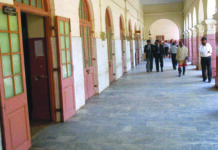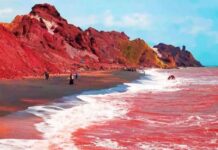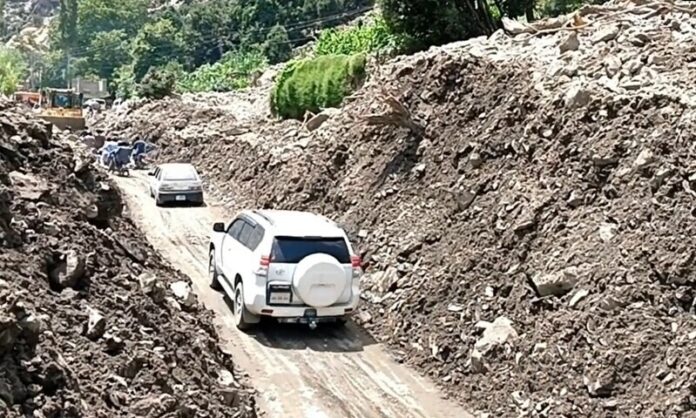ISLAMABAD: The Babusar Highway in Gilgit-Baltistan (GB) was partially reopened on Monday as authorities continued their search for missing persons following devastating flash floods in the region.
These floods, triggered by heavy rainfall on July 21, left widespread destruction across GB, with landslides and flash floods damaging infrastructure and causing multiple casualties.
The flash floods, which were exacerbated by climate change-induced heatwaves and erratic weather patterns, resulted in the loss of at least 10 lives, with four others sustaining injuries. Over 500 homes and several roads were damaged, leaving many people stranded and trapped in the affected areas. As part of the ongoing recovery efforts, the Babusar-Naran Highway, a key route in the region, was reopened for one-way traffic.
Faizullah Faraq, a spokesperson for the GB government, confirmed that heavy machinery was used to reopen the highway, with complete restoration efforts still underway. Passengers were advised to avoid unnecessary travel and remain cautious while navigating the region.
One of the most tragic aspects of the incident involved the family of TV anchor Shabana Liaquat, whose wallet and her child’s student cards were found among the flood debris. The Liaquat family, along with several other families, contacted the government to help locate their missing loved ones.
In response, the GB government has enlisted the assistance of sniffer dogs from the Pakistan Army to search for the missing persons, who may be trapped under the rubble.
The National Highway Authority (NHA) has also stepped up its efforts to restore the affected roads. Minister for Communications Abdul Aleem Khan announced that road restoration operations were ongoing, particularly on critical routes like the Mansehra-Naran-Jalkhad (N-15) and Skardu-Jaglot Road, both of which had been blocked by landslides and cloudbursts.
The NHA has cleared most of the landslide-affected points on these routes, and 20 out of 25 points on the Skardu-Jaglot Road were successfully cleared.
Khan emphasized the importance of the N-15 as a vital route for tourism and regional connectivity. He noted that restoration work from Naran to Babusar Top and Chilas was ongoing, and traffic had resumed toward Kaghan and Naran. Additionally, NHA teams were on 24-hour alert, with field officers dispatched to ensure the rapid resolution of any further disruptions.
Meanwhile, the National Disaster Management Authority (NDMA) issued an alert for further rainfall in northern areas of the country, including GB and Azad Jammu and Kashmir, from July 28 to 31. The NDMA warned of potential risks of urban flooding, glacial surges, and landslides due to heavy rainfall in hilly regions. Areas like Gilgit, Skardu, Hunza, and Shigar in GB, along with Muzaffarabad, Neelum Valley, and Bagh in Azad Jammu and Kashmir, are expected to experience heavy showers, which may trigger landslides and flooding.
The NDMA’s alert particularly emphasized the potential for increased water flow in the River Chitral due to rainfall and glacier melting, which could exacerbate the flooding risks in Chitral Valley. The authorities have urged residents and travelers to stay cautious, and officials are on high alert for any emergencies.
As the region continues to recover from the devastating floods, both government agencies and local communities are working together to mitigate the damage and provide aid to those affected. The full restoration of roads and infrastructure is a priority as authorities work to ensure the safety and well-being of residents and travelers in the affected areas.
























Explore more about Lucky Jet today!